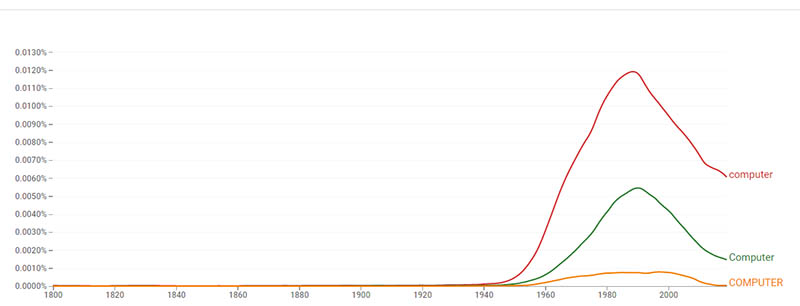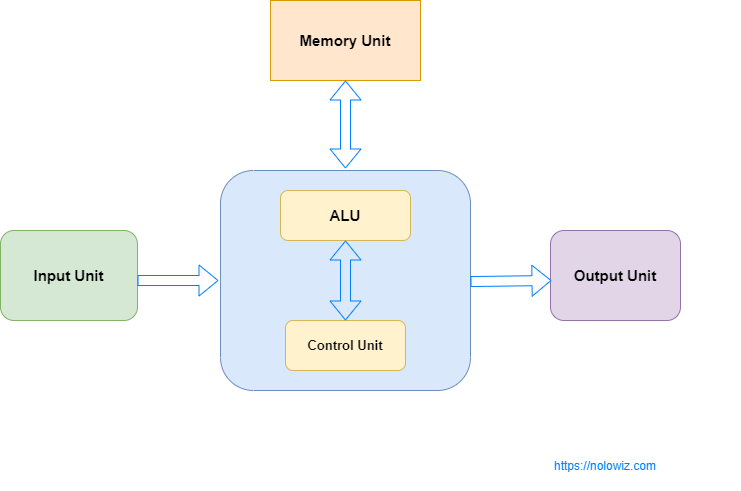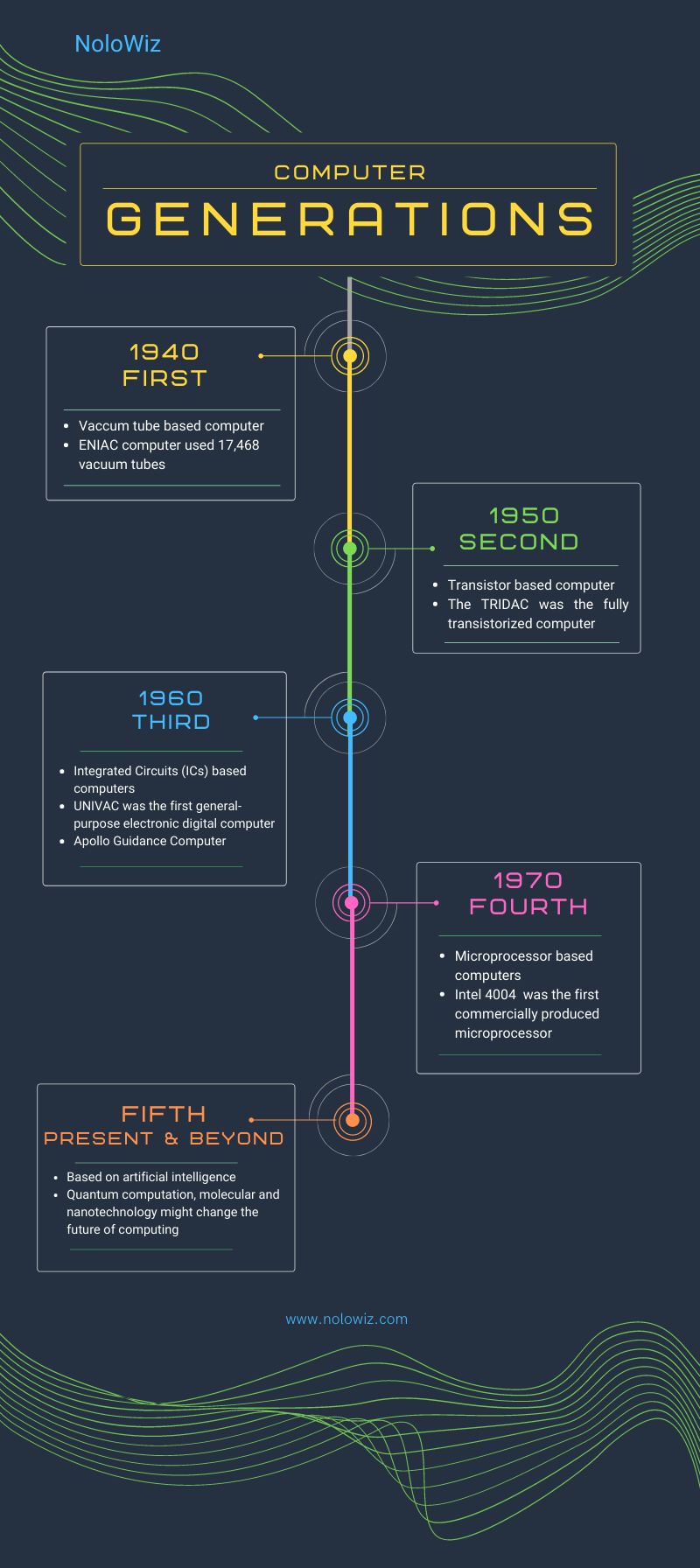Computers became an essential part of our life. In this article, we will discuss the origin of the word computer and its full form.
Charles Babbage invented the first general-purpose computer in late 1837. A computer is basically an electronic machine that processes the inputs and produces output.
Let’s look into the origin of the computer word and usage.
- The word computer was first used in a 1613 book called “The Yong Mans Gleanings” by the English writer Richard Braithwait (As per Oxford English dictionary).
- “Computer” comes from the Latin “putare” which means both to think and to prune.
- In 16th and 17 th century, “computer” means a person who performed calculations or computations.
Computer word usage in books from 1800 to 2019 as shown below

From the above graph, we can see that COMPUTER word usage is low or decreased. Some people say that the full form of COMPUTER is Common Operating Machine Purposely Used for Technological and Educational Research, but it is only a myth and the definition of computer is
an electronic machine that can store, organize and find information, do processes with numbers and other data, and control other machines
– Oxford dictionary
So the full form of COMPUTER is not correct as per the definition of computer.
In conclusion, the word computer is neither an acronym nor an abbreviation. So the full form of computer has no significance.
What is Computer?
A computer is a programmable electronic device that takes raw inputs processes using arithmetic or logic operations and provides its outputs.
Computers can be programmed using assembly language or high-level programming languages like C, CPP, Java, Python, etc.
A computer has the following parts
- Control unit (CU) – To control the operations
- Arithmetic logic unit (ALU) – To process data using arithmetic and logical operations
- Memory unit – To store the data
- Input/output (I/O) controllers – Manages input/output data to the connected peripherals (mouse/keyboard etc)

Classification of computers based on generation
First-generation (1940-1950)
First-generation computers are known as vacuum tube computers because vacuum tubes are used for logic circuitry. ENIAC(Electronic Numerical Integrator and Computer) computer is an example of this generation. Vacuum tubes are slow in logic operations.
Second generation(1950-1960)
The invention of transistors boosted computer processing power. Second-generation computers are based on transistors. First-generation vacuum tubes generated lots of heat and were bulky. The TRADIC (TRAnsistor DIgital Computer or TRansistorized Airborne DIgital Computer ) was the first fully transistorized computer.
Third generation(1960-1970)
Third-generation computers are based on integrated circuits (IC).UNIVAC was the first general-purpose electronic digital computer. Apollo Guidance Computer is another example of the third generation of computers.
Fourth generation(1970-present)
Microprocessors are used for the computation. Intel 4004 was the first commercially available microprocessor. VLSI( Very large scale integration)/ULSI manufacturing process used to produce microprocessors.
Fifth-generation ( The present and future)
Fifth-generation computers are based on artificial intelligence. Quantum computation, molecular and nanotechnology might change the future of computing

Here is the list of some commonly used full forms of computer-related terms
- CPU – Central Processing Unit
- DDR – Double Data Rate
- RAM – Random Access memory
- ROM – Read Only Memory
- GPU – Graphics Processing Unit
- BIOS – Basic Input Output System
- USB – Universal Serial Bus
- HDD – Hard Disk Drive
- SSD – Solid State Drive
- CD – Compact Disk
- DVD – Digital Video Disk
- IDE – Integrated Drive Electronics
- SATA – Serial Advanced Technology Attachment
- PATA – Parallel Advanced Technology Attachment
- SMPS – Switch Mode Power Supply
- UPS – Uninterrupted Power Supply
- VGA – Video Graphics Array
- NTFS – New Technology File System
- FAT – File Allocation Table